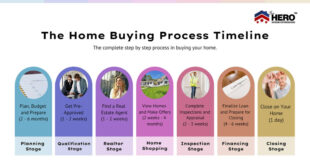Refinancing Cash-Out Options: Unlocking Your Home Equity. Refinancing cash-out options allow homeowners to tap into their home’s equity and access funds for various purposes. Whether you’re looking to consolidate debt, renovate your property, or cover significant expenses, cash-out refinancing can be a powerful financial tool. This guide explores the process, benefits, considerations, and tips for maximizing its potential.
What Is Cash-Out Refinancing?
Cash-out refinancing involves replacing your existing mortgage with a new loan, usually with a higher amount. The difference between the new loan and your remaining mortgage balance is paid out to you as cash. This option enables you to leverage your home’s value without selling it.
How Does It Work?
- Determine Equity: Calculate your home’s current market value and subtract the remaining mortgage balance to determine your equity.
- Qualify for a Loan: Meet lender requirements such as credit score, income verification, and debt-to-income (DTI) ratio.
- Loan Terms: Choose the loan amount and term that aligns with your financial goals.
- Receive Funds: Once approved, you’ll receive the cash, which can be used as needed.
Benefits of Cash-Out Refinancing
- Access to Funds: Use the cash for home improvements, education, or investments.
- Debt Consolidation: Pay off high-interest debts, such as credit cards, to save on interest.
- Potential Tax Benefits: Interest paid on the loan may be tax-deductible if used for eligible home improvements.
- Lower Interest Rates: Replace a high-interest mortgage with a lower-rate loan.
- Flexibility: Funds can be allocated toward various financial goals.
Key Considerations
- Closing Costs: Expect to pay 2-6% of the loan amount in closing costs.
- Interest Rates: Rates may be higher than a traditional refinance.
- Loan Terms: Extending the term could increase the total interest paid over time.
- Risk of Foreclosure: Defaulting on payments puts your home at risk.
- Credit Score Impact: A lower credit score may limit your options or result in higher rates.
Steps to Get Started
- Assess Financial Needs: Define your purpose for refinancing.
- Check Credit Score: Ensure your credit score meets lender requirements.
- Research Lenders: Compare offers from multiple lenders.
- Gather Documents: Prepare necessary documents, including proof of income and property value.
- Apply for Refinancing: Submit an application and undergo the approval process.
- Review Terms: Carefully review loan terms before signing.
Common Uses of Cash-Out Refinancing
- Home Renovations: Increase property value with upgrades.
- Debt Consolidation: Simplify finances by combining debts.
- Emergency Expenses: Cover medical bills or unexpected costs.
- Education Funding: Invest in higher education for yourself or your children.
- Investment Opportunities: Use funds to diversify your investment portfolio.
10 Tips for Refinancing Cash-Out Options
- Check Your Credit Score: Aim for a score of 620 or higher for better rates.
- Shop Around: Compare multiple lenders to secure favorable terms.
- Understand Closing Costs: Factor in all costs when calculating affordability.
- Avoid Overborrowing: Borrow only what you need to avoid excessive debt.
- Consider Home Value: Ensure your property value supports the desired loan amount.
- Maintain a Low DTI: Keep your debt-to-income ratio below 43%.
- Lock in Low Rates: Act quickly to secure favorable interest rates.
- Consult a Financial Advisor: Seek professional advice to align the loan with your goals.
- Prepare for Appraisal: Ensure your home is in good condition for a favorable appraisal.
- Read the Fine Print: Understand all terms and conditions before finalizing the loan.
10 Frequently Asked Questions (FAQs)
1. What is the maximum amount I can borrow? Lenders typically allow up to 80% of your home’s value minus the remaining mortgage balance.
2. How is my home’s value determined? An appraiser evaluates your property to determine its market value.
3. Will cash-out refinancing affect my credit score? Yes, applying for a new loan can temporarily lower your score due to the hard inquiry.
4. Are there tax benefits? Interest may be tax-deductible if used for qualifying home improvements.
5. What are the risks? Failing to repay the loan could result in foreclosure.
6. How long does the process take? The process typically takes 30-45 days, depending on the lender.
7. Can I refinance if I have bad credit? Yes, but you may face higher interest rates or stricter terms.
8. What are alternative options? Home equity loans or HELOCs may be alternatives to consider.
9. Can I refinance again in the future? Yes, but consider costs and lender restrictions.
10. What fees are involved? Closing costs, appraisal fees, and origination fees are common expenses.
Conclusion
Cash-out refinancing is a strategic way to unlock your home’s equity and access funds for various needs. By understanding the process, evaluating the benefits and risks, and following best practices, you can make informed decisions that align with your financial goals. Remember to shop around for the best rates and terms, and consider consulting a financial advisor for personalized guidance.
Ultimately, cash-out refinancing offers flexibility and financial freedom but requires careful planning and responsibility. Use this guide to navigate the process and achieve your goals while safeguarding your home’s value and stability.
 mortgage.kbk.news
mortgage.kbk.news
